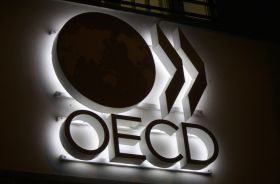Economics, Estonia, EU – Baltic States, Legislation, Markets and Companies, Technology
International Internet Magazine. Baltic States news & analytics
Saturday, 20.12.2025, 18:03
Estonian, Finnish government office heads give overview of implementing OECD advice
 Print version
Print version |
|---|
Last February OECD in a joint review examining Estonia's and Finland's commitment to public governance reform recommended the Estonian and Finnish governments to focus on up to five strategic objectives and to set up a dedicated contingency fund or policy reserve to support policy initiatives, spokespeople for the Estonian Government Office said.
The review discussed challenges in whole-of-government strategy steering and the opportunities of digital government, provided country-specific recommendations and developed a joint roadmap to support Estonia's and Finland's ambitions to develop well designed cross-border services for citizens and businesses. This was the first joint OECD Public Governance Review between two countries.
Estonian and Finnish prime ministers in May signed a joint declaration with an initial road map for launching data exchange and e-services between Estonia and Finland. They also agreed that by the end of the year concrete action plans would be drawn up to launch an automatic data exchange between commercial registers, population registers and social support data, digital prescriptions, and in the maritime field.
The part of the report dealing with governance highlighted insufficient cooperation among ministries, described in the report as problem of "silos." It said the government must break down barriers to pooling knowledge, resources and expertise from across the system to achieve broad public-sector outcomes.
Estonia could consider reducing the 55 strategic objectives in its government program to a smaller number of more high-level, overarching objectives and linking these to a broad, integrated, vision-based strategic framework that it seeks to achieve by the end of its four-year mandate.
Lehtomaki expressed a wish for Estonia and Finland to cooperate even more in the field of public governance and learn from each other's experience in different fields.
The government could consider, for multi-sector strategies or programs identified in the government strategic programming documents and national strategy initiatives, identifying in the state budget dedicated funding. To plan for unforeseen or unanticipated contingencies, the government should identify an annual "policy reserve" contingency fund for strategic multi-sector policy initiatives, the report said.
Besides the Estonian government could consider adding indicators measuring top civil servants' performance against the achievement of their ministry's policy objectives and their ministry's contribution to government-wide strategic objectives, in addition to assessing their performance against the core competencies of the position they occupy
Pointing out that Estonia and Finland share an ambition to make digital government a strategic tool for government reform and modernization, the report titled "Fostering Strategic Capacity across Governments and Digital Services across Borders" identified five principles of whole-of-government approach to reform: streamlining strategy; silo-busting for better policy integration; setting clear reform paths; adopting "Just do it" pragmatism; and knowledge-sharing that breaks down borders.








 «The Baltic Course» Is Sold and Stays in Business!
«The Baltic Course» Is Sold and Stays in Business!

